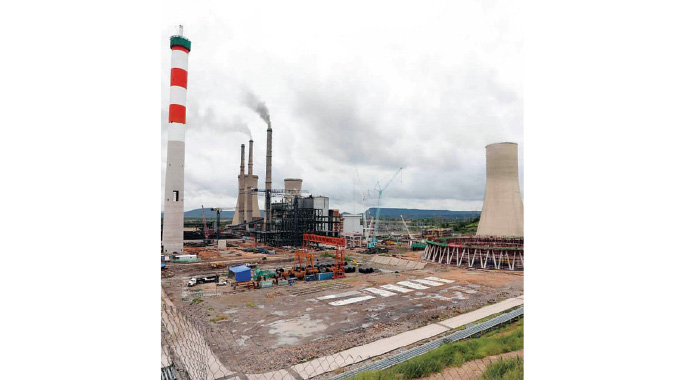COMMENT: Our fast-recovering economy needs electricity

Covid-19 disrupted work on the expansion of Hwange Thermal Power Station in the first months of last year.
Chinese engineers deployed at the US$1,5 billion project could not travel from their country because of travel restrictions instituted at the peak of the outbreak. It is also possible that, due to the pandemic and the restrictions it occasioned, some materials needed on site could not be shipped from China into the country as smoothly as expected.
According to a schedule drafted at the beginning of the project in August 2018, progress was supposed to have reached 57 percent completion in the second quarter of last year, but was at 47,5 percent.
However, as controls were being relaxed, the engineers for key contractor, Sino Hydro, were later able to travel to the site.
As work at the country’s largest coal-fired power plant is being intensified, the project is now 67,9 percent complete.
If that momentum is maintained, the country should, sometime next year, start receiving 600megawatts (MW) of more electricity from the plant. Its existing capacity is 920MW, so when ongoing works are done, Hwange Thermal would be contributing 1 520MW to the national grid.
“Despite the setbacks in timelines of the project completion dates due to the effects of the Covid-19, a number of noteworthy milestones have been achieved to date,” Zimbabwe Power Company said at the weekend.
“These include completion of the cooling tower shell, installation of the generator stators for Unit 7 and 8, tower erection on the transmission and distribution side and installation of stream turbines. Benefits which will be realised upon completion of the project include self-sufficiency in electricity generation and reduction in electricity imports. It will also serve as an enabler for economic growth with 10 percent of the Engineering, Procurement and Construction (EPC) contract (US$117 379 205) going towards local resources, skills transfer from foreign counterparts to the local community, creation of employment as approximately 5 000 workers will be employed at peak, translating to 1 300 foreigners and 3 600 Zimbabweans.
The Hwange 7 and 8 expansion project entails construction of two units of 300MW each that are being added to the existing 920MW Hwange Power Station. This is one of the key projects that are set to provide relief and self-sufficiency to power generation in the country.”
This is commendable progress despite the disruption caused by the pandemic. It is also encouraging that despite the outbreak and the long delay it caused, the contractors are confident that they will finish the work next year as initially scheduled. This shows a strong work ethic on the part of the team that is on site.
Hwange Thermal Power Station expansion project is one of the first major projects to take off in the Second Republic. The progress that is being made there is therefore a plus on the record of the Government, the record of delivering finished projects, not just delivering rhetoric.
We urge the contractors to work even harder on this very crucial piece of infrastructure. When complete, the coal-burning facility would be a welcome addition to the national fleet of power plants. Our fast-recovering economy must boost its electricity generating plants to meet demand that naturally rises with improving economic activity.
The Confederation of Zimbabwe Industries reported recently that manufacturing capacity utilisation for the second quarter of this year should rise to 56 percent, an improvement from 47 percent in the first quarter. It projects capacity utilisation to continue rising, closing the year at 56 percent.
In its own forecast, the International Monetary Fund almost doubled its economic growth forecast for the country, citing the bumper harvest, improved power supply and an increase in manufacturing and construction. Speaking at the end of a two-week virtual visit to the country, the reputable institution said the economy will expand by about six percent this year.
We think the growth would be sustained well into the future beyond this year given the conducive investment climate prevailing in the economy.
For that growth to be sustained, enough electricity must be guaranteed. It is in that light that we want the Hwange project to succeed and succeed as scheduled next year.









Comments